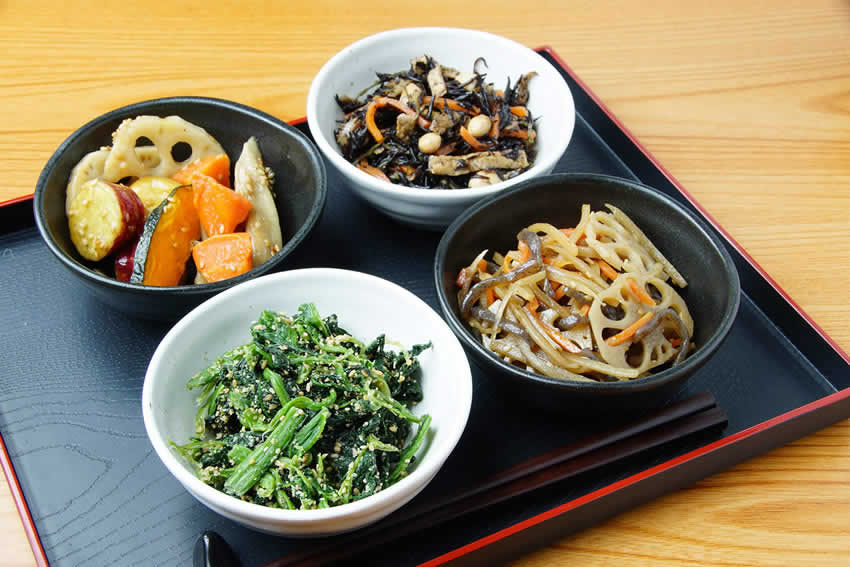

MASTER'S BOOK
THE MOST DELICIOUS SIMPLE INGREDIENTS OF JAPANESE CUISINE
Japanese salads
Many people from the West associate Japanese cuisine mostly with it characteristic dishes, such as sushi, udon or ramen. However, Japanese menu is much more diverse, with both home-made and restaurant meals full of distinct flavours. Japan’s most popular ingredients, i.e. rice, fish and seafood, can often be found in healthy low-calorie salads, which serve as additions to other dishes or form the core part of the meal. Japanese salads also contain vegetables, such as broccoli, cauliflower, beans, spinach, carrot, cucumber, as well as fish, seafood, noodles, surimi, miso, sesame, eggs, seaweed and many more.
Japanese cucumber salad
The cucumber salad is known in Japan as sunomono. In Japanese, the term is also used to denote vinegar-marinated food. This popular salad consists of miso, roasted sesame, fresh cucumbers, rice vinegar, sugar or powdered cane sugar. It is perfect as an addition to dinner or a standalone snack between meals. Its low calorie content makes is excellent if you are on a diet. Japanese cucumber salad may be an alternative to traditional European raw vegetable salads or the popular salad of fresh cucumber and sour cream. It is very important to remove excess water from cucumbers before they are saturated in the marinade.
Japanese salads with fish
The Japanese love the taste of fish. It is an ingredient added to plenty of dishes, such as salads served during breakfasts, dinners and suppers. It goes well with noodles, seaweed and spinach with wafu (Japanese dressing – the classic one is based on soy sauce, rice vinegar, mirin and vegetable oil). Other components of salads include salmon, tuna, mackerel and for those with more eccentric preferences – crabs, shrimps or octopuses. A fish salad can be served with such condiments as sesame, ginger, soy sauce or wasabi.
Japanese salads with noodles
Japan is famous for delicious noodles which are often the core part of many meals. Classic Japanese noddles, soba or soybean pasta are also perfect salad ingredients. A simple soba salad, inspired by Italian spaghetti, is an example of a popular salads with noodles. The ingredients added to noodles depend on individuals preferences but the delicate Japanese noodles go well with vegetables, fish and seafood.
Japanese salad with surimi
Another popular Japanese snack is surimi, that is minced, ground fish meat. Surimi is often served with rice noodles, boiled eggs and delicate spices, leek or parsley.
Japanese green salad
People in Japan love green vegetables so there is no surprise that a salad made of spinach leaves and young green beans is one of their favourites. Spinach mixed with beans was named Goma-ae. When combined with vegetables, sweet sesame sauce gives an exciting Oriental taste.
Hijiki – Japanese seaweed salad
With the wild seaweed varieties growing on rocky coasts and carrot at the centre, the Hijiki salad is a popular element of Japanese diet. Brown or green seaweeds are cooked and dried, turning black in the process. As a result, every Japanese can buy dried seaweeds in a supermarket. Hijiki, an element of balanced Japanese diet for the past ages, contains fibre and essential minerals, such as calcium, iron and magnesium.
Summary
The diversity of Japanese salads allows you to combine your favourite flavours. Popular Japanese salads contain both vegetarian food as well as dishes with meat and seafood. There are no mandatory rules you must follow while preparing a Japanese-style salad, With the strictly Japanese ingredients being provided, the rest is up to the individual tastes and preferences of the cook.























